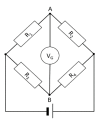Module for Monitoring the Probe-Skin Contact Force in the Study of Vibration Perception on the Wrist
- PMID: 33803608
- PMCID: PMC8003066
- DOI: 10.3390/s21062128
Module for Monitoring the Probe-Skin Contact Force in the Study of Vibration Perception on the Wrist
Abstract
This paper presents a module for monitoring the contact force between a probe for measuring vibration perception on the wrist and the skin. The module was designed for an original measuring stand for the automatic testing of the vibrotactile discrimination thresholds using the psychophysical adaptive method of 1 up-2 down with two or three interval forced choices (2IFC, 3IFC). Measurement methods were implemented in LabVIEW software. The inspiration for the project was the need to check the possibility of building a vibrating interface for transmitting information through vibrations delivered to the wrist via a bracelet. The test procedure on the wrist is not standardized; however, during its development, the recommendations of the Polish Norm-International Organization for Standardization PN-ISO 13091-1, 2006 were adopted. This standard contains methods for measuring vibration sensation thresholds on the fingertips for the assessment of neural dysfunction. The key to the repeatability of measurements seems to be the ability to continuously control the pressure of the measuring probe on the skin. This article compares two solutions for measuring the contact force along with an analysis of their accuracy and the impact of vibrations on the measured values. Moreover, the results of measurements of vibrotactile amplitude and frequency discrimination thresholds obtained on the ventral wrist at five frequencies (25, 32, 63, 125 and 250 Hz) are presented.
Keywords: force measurement; smart city for blind people; strain gauge beam; vibrotactile discrimination.
Conflict of interest statement
The authors declare no conflict of interest.
Figures












Similar articles
-
Vibrotactile Thresholds on the Wrist for Vibrations Normal to the Skin.IEEE Trans Haptics. 2023 Oct-Dec;16(4):628-633. doi: 10.1109/TOH.2023.3275185. Epub 2023 Dec 21. IEEE Trans Haptics. 2023. PMID: 37167041
-
Measurements of vibrotactile perception thresholds at the fingertips in Poland.Ind Health. 2005 Jul;43(3):535-41. doi: 10.2486/indhealth.43.535. Ind Health. 2005. PMID: 16100930
-
Repeatability of vibrotactile perception thresholds obtained with two different measuring systems.Int J Occup Med Environ Health. 2003;16(4):311-9. Int J Occup Med Environ Health. 2003. PMID: 14964640
-
[Standardized new method for measuring vibration perception].Med Pr. 2001;52(5):315-20. Med Pr. 2001. PMID: 11828844 Polish.
-
[Comparison of vibrotactile thresholds in women obtained with two psychophysical measurement methods].Med Pr. 2004;55(4):321-8. Med Pr. 2004. PMID: 15620041 Polish.
References
-
- Pezent E., Israr A., Samad M., Robinson S., Agarwal P., Benko H., Colonnese N. Tasbi: Multisensory squeeze and vibrotactile wrist haptics for augmented and virtual reality; Proceedings of the 2019 IEEE World Haptics Conference (WHC); Tokyo, Japan. 9–12 July 2019; pp. 1–6. - DOI
-
- Sreelakshmi M., Subash T.D. Haptic technology: A comprehensive review on its applications and future prospects. Mater. Today Proc. 2017;4:4182–4187. doi: 10.1016/j.matpr.2017.02.120. - DOI
-
- IEEE World Haptics Conference (WHC) [(accessed on 28 December 2020)]; Available online: https://ieeexplore.ieee.org/xpl/conhome/1001635/all-proceedings.
MeSH terms
Grants and funding
LinkOut - more resources
Full Text Sources
Other Literature Sources

